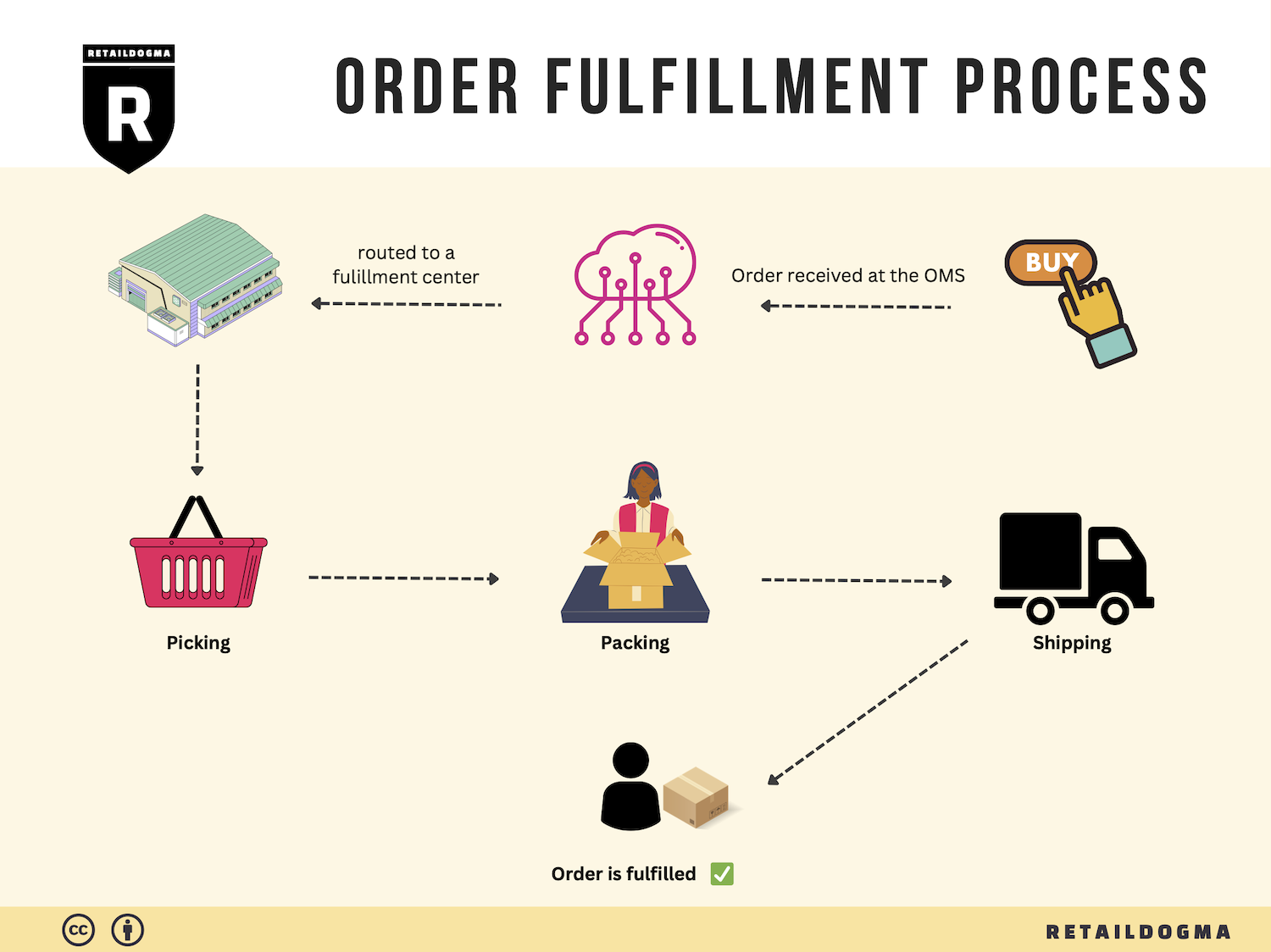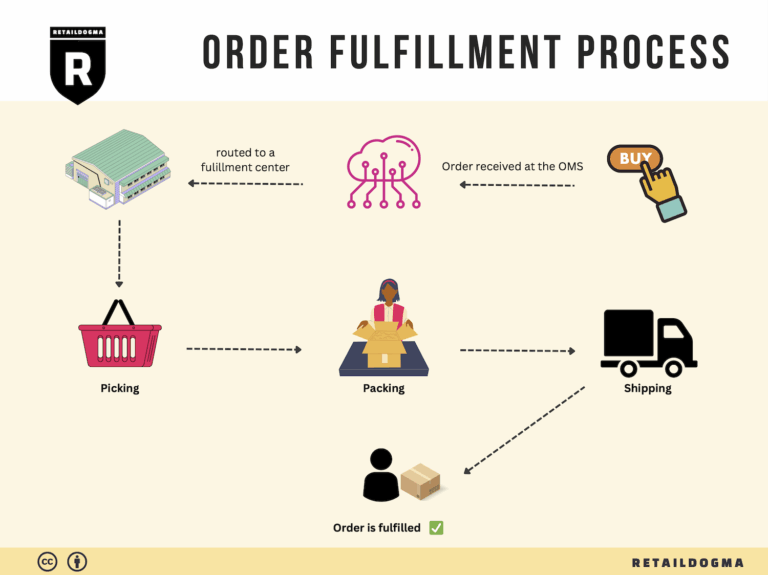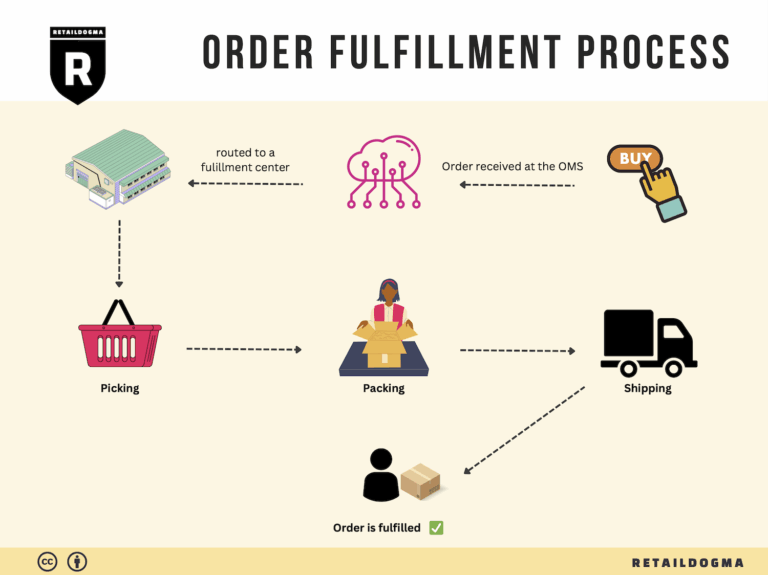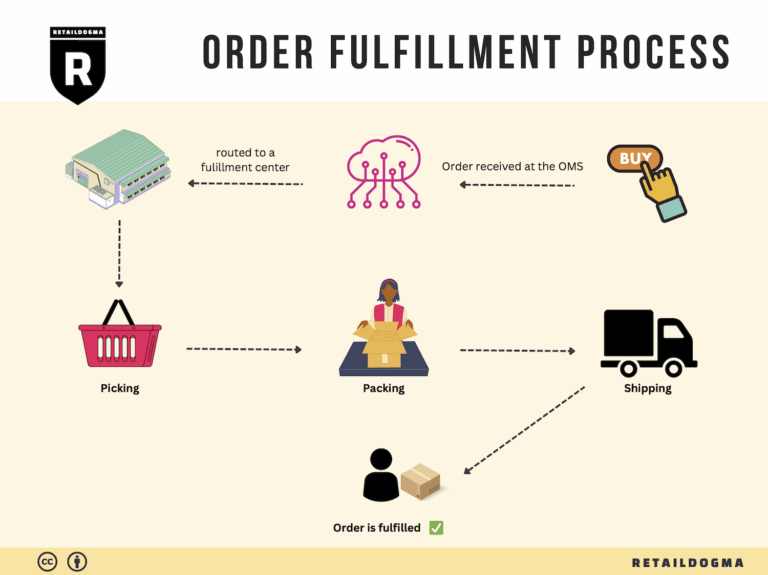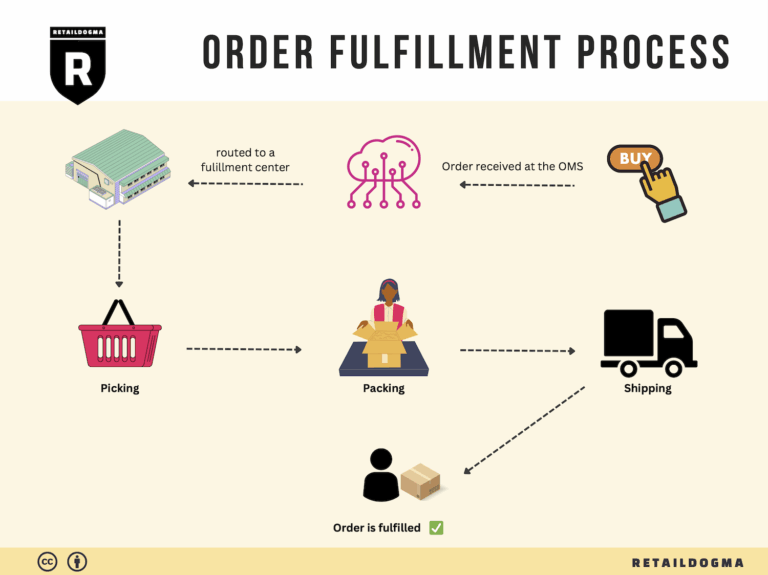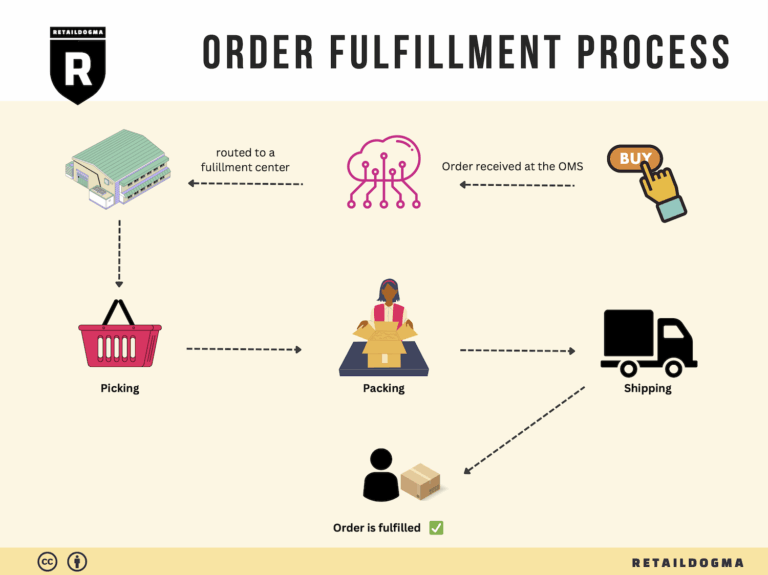How Order Fulfillment Works: A Step-by-Step Guide for Businesses
What is E-commerce Fulfillment? An Introduction for Growing Businesses
Understanding E-commerce Fulfillment: A Key to Scaling Your Business
As an e-commerce business owner, you may find yourself overwhelmed by the relentless demands of packing and shipping orders. Managing inventory, ensuring timely deliveries, and maintaining customer satisfaction can quickly become a daunting task. This is where e-commerce fulfillment comes into play. Simply put, fulfillment is the process of getting a product from your inventory to your customer’s doorstep. It encompasses everything from receiving orders to processing payments, picking items, packing them, and finally shipping them out.
In this guide, we will delve into the various aspects of e-commerce fulfillment, providing you with the knowledge needed to navigate this critical component of your business operations. We will explore different fulfillment models, including Third-Party Logistics (3PL) and Fulfillment by Amazon (FBA), to help you understand the options available to you. Each model has its own set of advantages and can be tailored to fit your specific business needs.
Additionally, we will cover the core services associated with e-commerce fulfillment. These services include inventory management, order processing, shipping, and returns handling. Understanding these components will enable you to streamline your operations and enhance customer satisfaction.
Choosing the right fulfillment partner is crucial for your business’s success. We will guide you through the decision-making process, highlighting key factors to consider, such as location, technology integration, scalability, and customer service. A well-chosen partner can significantly reduce your operational burden, allowing you to focus on growing your business.
Pricing is another essential aspect we will discuss. Fulfillment costs can vary widely based on factors like order volume, storage space, and shipping methods. We will break down these costs and provide insights on how to budget for fulfillment without compromising service quality.
Ultimately, this guide aims to empower you to make informed decisions about your logistics strategy. By understanding e-commerce fulfillment in detail, you can optimize your operations, reduce costs, and ultimately enhance the customer experience. With the right approach, fulfillment can become a streamlined process that supports your growth rather than a source of stress. Let’s embark on this journey to demystify fulfillment and set your business up for success.
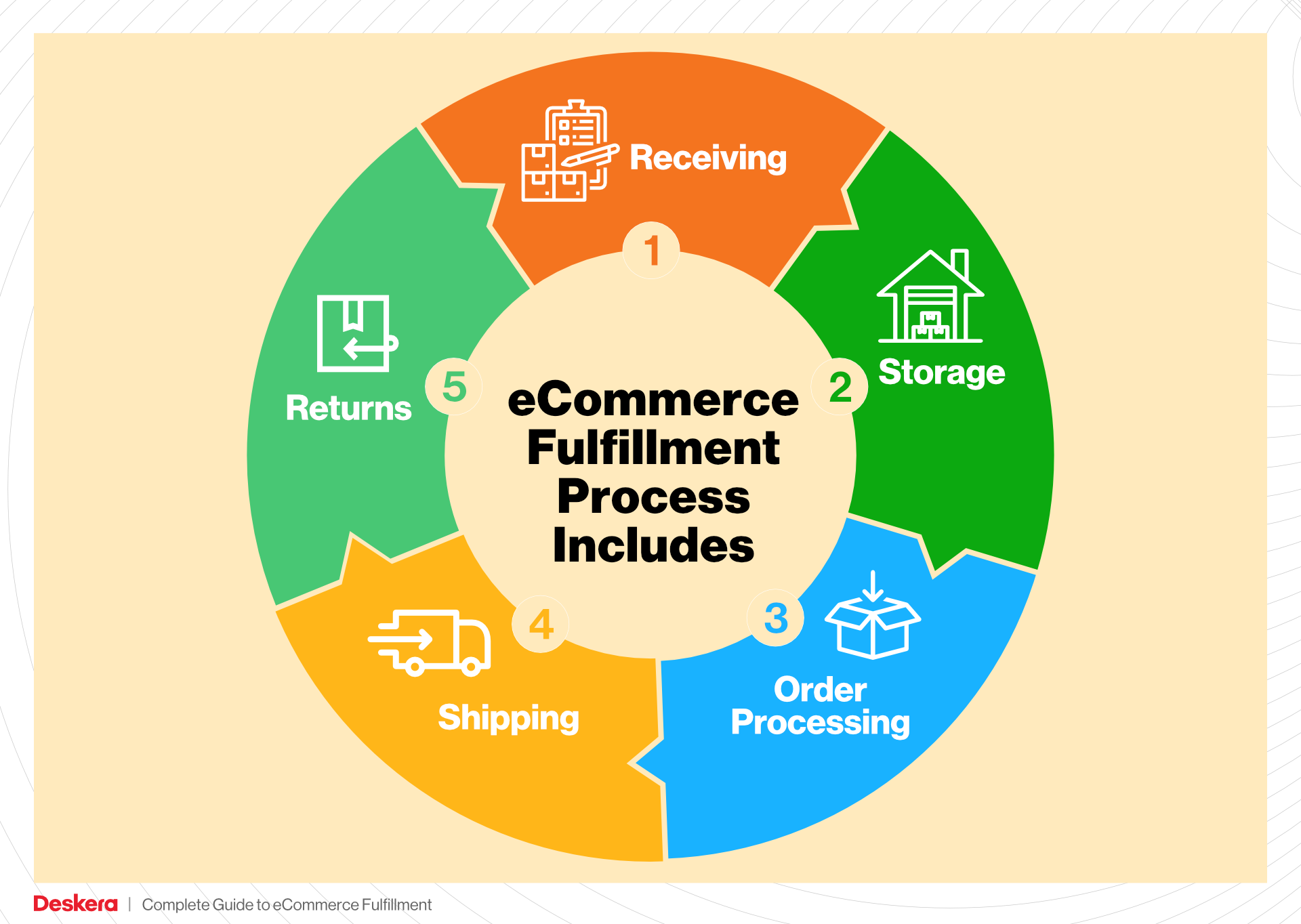
What You’ll Learn In This Guide
- What is E-commerce Fulfillment? An Introduction for Growing Businesses
- The Order Fulfillment Process: From ‘Buy’ Button to Customer’s Door
- Comparing Fulfillment Models: In-House vs. 3PL vs. Dropshipping
- A Deep Dive into Amazon FBA: Pros, Cons, and Who It’s For
- Core Services Offered by Fulfillment Centers
- How to Choose a Fulfillment Partner: A 6-Point Checklist
- Understanding Fulfillment Pricing: A Breakdown of Common Fees
- Frequently Asked Questions (FAQs) about Fulfillment
- Conclusion: Is Outsourcing Fulfillment the Right Move for Your Business?
- Important Disclaimer
The Order Fulfillment Process: From ‘Buy’ Button to Customer’s Door
1. Receiving Inventory
The order fulfillment process begins with receiving inventory, a crucial step that lays the groundwork for efficient operations. When goods arrive at your warehouse or fulfillment center, they must be carefully checked against the purchase order to ensure accuracy in quantity and quality. This process often involves the use of SKUs (Stock Keeping Units), unique identifiers that help in tracking products.
Importance: Proper inventory receiving is vital for maintaining stock levels and preventing discrepancies. A thorough check minimizes the risk of returns and enhances customer satisfaction by ensuring that the right products are available when orders are placed.
Key Terms: SKUs are essential for tracking inventory and ensuring that all items are accounted for upon receipt.
2. Warehouse Storage
Once inventory is received, the next step is warehouse storage. This involves organizing products in a manner that maximizes space and improves retrieval efficiency. Items are typically categorized based on demand, size, and type, often utilizing an ABC analysis approach. This categorization helps in prioritizing high-demand items for easier access.
Importance: Efficient storage solutions streamline the picking process and reduce the time spent searching for items. Proper organization also contributes to better inventory management, ensuring that stock levels are accurately maintained and easily auditable.

Key Terms: ABC analysis categorizes inventory into three classes—A, B, and C—based on their value and turnover rates, enabling strategic storage decisions.
3. Order Picking
After an order is placed, the next step is order picking, which involves selecting the correct items from the warehouse to fulfill the order. This process typically utilizes pick lists, which are generated based on the items ordered. These lists guide warehouse staff to the exact locations of the products, ensuring accuracy and efficiency.
Importance: Effective order picking is crucial for minimizing errors and enhancing speed. The faster and more accurately orders are picked, the more satisfied customers will be, leading to repeat business and positive reviews.
Key Terms: Pick lists streamline the picking process, ensuring that staff retrieve the correct items in the most efficient manner.
4. Order Packing
Once items are picked, they move to the packing stage. This involves carefully packaging products to ensure they are protected during transit. Packing materials should be selected based on the item type, with considerations for weight, fragility, and shipping method. The use of packing slips is also standard, which provide customers with a summary of their order.
Importance: Proper packing is essential for minimizing damage during shipping and enhancing the customer experience. A well-packaged order not only protects the items but also reflects professionalism and care, which can positively impact customer perception.
Key Terms: Packing slips provide essential information about the order, aiding in verification and ensuring customer satisfaction upon receipt.
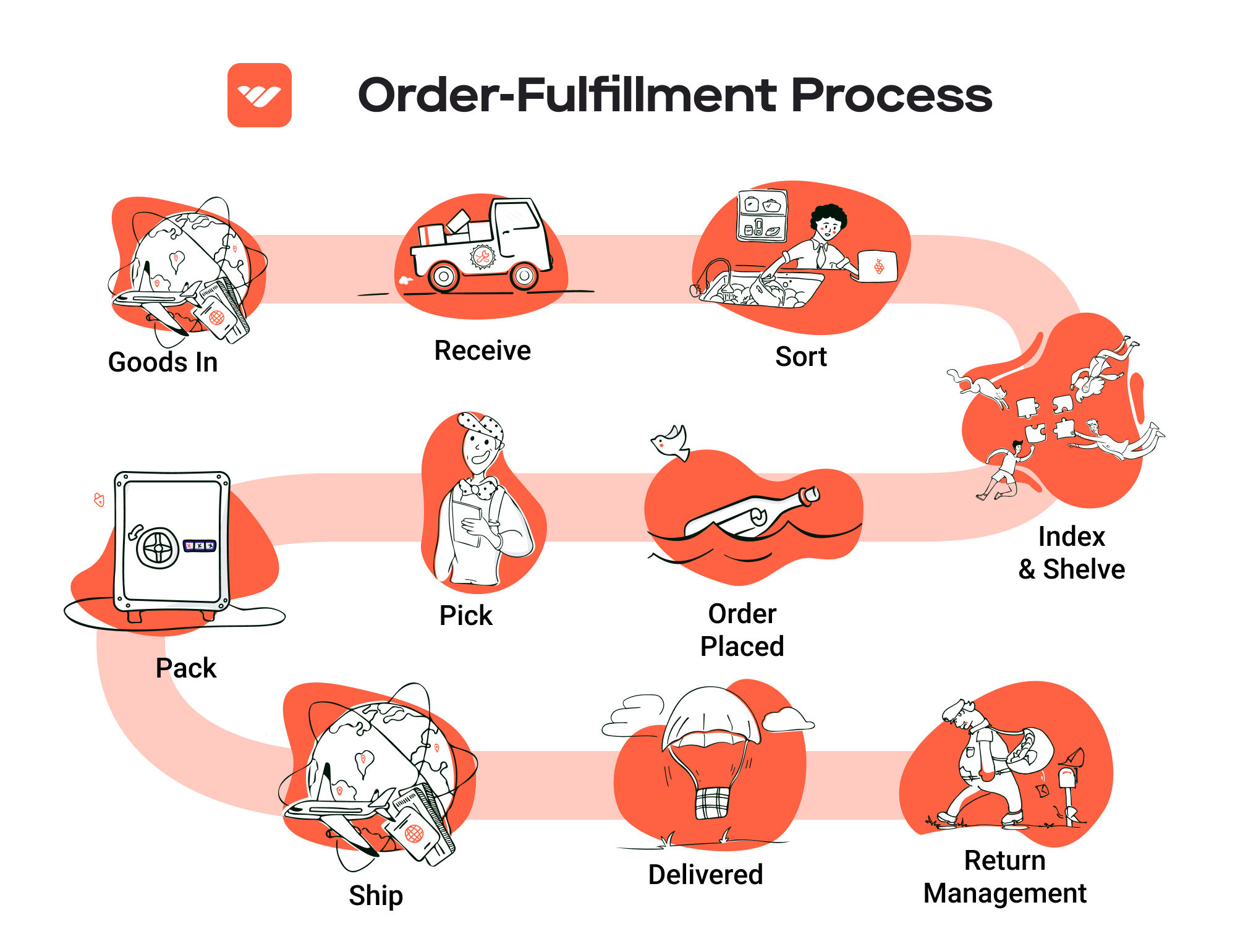
5. Shipping & Delivery
The final step in the order fulfillment process is shipping and delivery. This involves selecting a carrier, preparing shipping labels, and scheduling the delivery. Businesses often leverage third-party logistics (3PL) providers to handle this aspect, which can lead to cost savings and improved efficiency.
Importance: Timely and accurate delivery is the culmination of the fulfillment process and is critical for customer satisfaction. The speed and reliability of shipping can significantly influence customer loyalty and retention.
Key Terms: 3PL providers can offer specialized expertise in logistics, helping businesses scale their operations without the need for extensive in-house resources.
In summary, the order fulfillment process is a multi-step operation that requires careful management at each stage. By understanding and optimizing each component—from receiving inventory to shipping and delivery—e-commerce businesses can enhance their operational efficiency and ultimately improve customer satisfaction.
Comparing Fulfillment Models: In-House vs. 3PL vs. Dropshipping
Fulfillment Model Comparison
| Model | Who Handles Inventory | Best For (Business Stage) | Key Advantage | Key Disadvantage |
|---|---|---|---|---|
| In-House Fulfillment | Business itself | Established businesses with stable sales | Complete control over inventory and processes | High overhead costs and resource demands |
| Third-Party Logistics (3PL) | External logistics provider | Growing businesses needing scalability | Flexibility and reduced operational burden | Less control over inventory and operations |
| Dropshipping | Supplier or manufacturer | Startups and small businesses | Low upfront investment and risk | Lower profit margins and reliance on suppliers |
In-House Fulfillment
In-house fulfillment refers to a model where the e-commerce business manages its own warehousing, inventory management, order processing, and shipping. This approach allows companies to maintain complete control over their inventory, processes, and customer experience. Businesses that have established their brand and have stable sales often prefer this model, as it facilitates direct oversight and customization of operations. For instance, in-house fulfillment enables quicker response times for order processing and the ability to implement unique packaging or branding strategies that enhance customer satisfaction.
However, managing fulfillment in-house can lead to significant overhead costs, including warehousing expenses, labor costs, and technology investments. As businesses scale, these operational demands can strain resources, necessitating a reevaluation of whether to maintain in-house fulfillment or explore alternative models. Additionally, businesses must be prepared to handle fluctuations in demand, which can lead to challenges such as overstocking or stockouts.
Third-Party Logistics (3PL)
Third-party logistics (3PL) involves outsourcing some or all of the fulfillment processes to an external logistics provider. 3PL companies specialize in warehousing, inventory management, order fulfillment, and shipping, allowing e-commerce businesses to focus on core activities such as marketing and product development. This model is particularly beneficial for growing businesses that require scalability without the burden of managing logistics in-house.
The key advantage of using a 3PL provider is the flexibility it offers; businesses can easily scale their operations up or down based on demand without the need to invest heavily in warehousing or labor. Additionally, 3PLs often have established relationships with carriers, which can lead to cost savings on shipping. However, the trade-off is that businesses may experience less control over their inventory and fulfillment processes. This lack of direct oversight can lead to issues such as miscommunication, slower response times, and potential discrepancies in inventory management.
Dropshipping
Dropshipping is a fulfillment model where the retailer does not hold any inventory. Instead, when an order is placed, the retailer purchases the item from a third-party supplier, who then ships it directly to the customer. This model is ideal for startups and small businesses that want to minimize upfront investments and risks associated with holding inventory.
One of the primary advantages of dropshipping is the low overhead; businesses do not need to invest in inventory or warehouse space, making it easier to start and scale. This model allows entrepreneurs to offer a wide range of products without the financial burden of purchasing stock upfront. However, dropshipping also comes with significant disadvantages. Profit margins tend to be lower since retailers must pay suppliers’ prices, which can be higher than wholesale rates. Additionally, businesses rely heavily on suppliers for inventory management, shipping, and quality control, leading to potential delays and customer dissatisfaction if the supplier fails to meet expectations.
In conclusion, each fulfillment model presents distinct advantages and challenges. E-commerce businesses must carefully evaluate their current stage, resources, and growth objectives to select the fulfillment strategy that aligns best with their operational goals. As businesses evolve, the chosen fulfillment model may also need to adapt to ensure continued efficiency and customer satisfaction.
A Deep Dive into Amazon FBA: Pros, Cons, and Who It’s For
Understanding Fulfillment by Amazon (FBA)
Fulfillment by Amazon (FBA) is a service offered by Amazon that allows e-commerce sellers to store their products in Amazon’s fulfillment centers. Amazon then takes care of the storage, packaging, and shipping of these products to customers. This service simplifies logistics for sellers, enabling them to focus on other aspects of their business such as marketing and product development. FBA also provides sellers with access to Amazon’s vast customer base and its trusted brand reputation.
How FBA Works
-
Setting Up Your Account: Sellers begin by creating an Amazon Seller Central account. During the registration process, they can opt into FBA.
-
Sending Inventory to Amazon: Once registered, sellers prepare their products for shipment to Amazon’s fulfillment centers. This involves labeling products according to Amazon’s specifications and following specific packaging guidelines.
-
Storage: Upon arrival at the fulfillment center, products are stored until an order is placed. Amazon handles inventory management, allowing sellers to track their stock levels through Seller Central.
-
Order Processing: When a customer places an order for a seller’s product, Amazon picks, packs, and ships the item. This process is seamless, with Amazon managing logistics to ensure timely delivery.
-
Customer Service and Returns: FBA also includes customer service and handling returns. Amazon’s customer service team manages inquiries and issues, which adds a layer of convenience for sellers.
-
Payment: After the sale, sellers receive payment from Amazon, minus applicable fees. This typically occurs every two weeks.
Pros of Using FBA
1. Prime Eligibility
One of the most significant advantages of using FBA is that products become eligible for Amazon Prime. This means that Prime members can access fast, free shipping, which significantly increases the chances of sales. Prime customers are known to spend more on average, and having access to this demographic can lead to substantial revenue growth.
2. Customer Trust
Amazon is synonymous with trust and reliability. By using FBA, sellers can leverage Amazon’s brand reputation, which can enhance customer confidence. Many shoppers prefer products fulfilled by Amazon due to the perceived reliability of service and support.
3. Multi-Channel Fulfillment
FBA is not limited to sales on Amazon alone. Sellers can use Amazon’s fulfillment centers to fulfill orders from other sales channels, such as their own websites or other marketplaces. This flexibility can streamline logistics and improve overall efficiency.
4. Simplified Logistics
FBA simplifies the logistics process by outsourcing storage, packing, and shipping. This allows sellers to focus on growing their business rather than managing inventory and shipping logistics.
5. Access to Advanced Tools
Sellers using FBA have access to Amazon’s advanced tools for inventory management, order tracking, and sales analytics. These tools can provide valuable insights that can help sellers optimize their operations and marketing strategies.
Cons of Using FBA
1. High Fees
While FBA offers many benefits, it comes with a cost. Sellers incur various fees, including storage fees based on the amount of space their products occupy and fulfillment fees for each item sold. These costs can add up quickly, especially for low-margin products.
2. Strict Inventory Rules
Amazon enforces strict inventory management rules. Sellers must adhere to guidelines regarding product condition, packaging, and labeling. Failure to comply can result in additional fees or even suspension of selling privileges.
3. Commingling Risks
FBA uses a commingling system where inventory from different sellers is stored together. This can lead to issues if a seller’s products are mixed with lower-quality items, potentially resulting in negative customer reviews. Sellers may also find it challenging to track their own inventory accurately.
4. Limited Control Over Branding
Using FBA means that sellers have less control over the packaging and presentation of their products. Amazon handles the packing process, which can limit opportunities for branding and personalized customer experiences.
5. Dependence on Amazon
Sellers who rely heavily on FBA may find themselves dependent on Amazon for their sales and customer service. Changes in Amazon’s policies or algorithms can significantly impact a seller’s business.
Who is FBA Best For?
Fulfillment by Amazon is best suited for sellers who:
-
Have High Sales Volume: Sellers with a large number of orders can benefit from the streamlined logistics and reduced operational burden.
-
Sell Fast-Moving Products: Products that have a high turnover rate can offset the costs associated with FBA, making it a more viable option.
-
Want to Leverage Amazon’s Brand: New sellers or those looking to establish trust with customers can benefit from Amazon’s reputation.
-
Are Selling on Multiple Channels: Businesses that sell on various platforms can utilize FBA to centralize their fulfillment processes.
-
Lack Warehousing Space: Sellers without the capacity to store inventory can take advantage of Amazon’s extensive network of fulfillment centers.
In conclusion, Fulfillment by Amazon offers a powerful solution for e-commerce sellers looking to scale their operations. While it presents several advantages, it also comes with challenges that require careful consideration. By understanding both the pros and cons, sellers can make an informed decision on whether FBA aligns with their business goals.
Core Services Offered by Fulfillment Centers
Inventory Management & Warehousing
Inventory management and warehousing are foundational services provided by fulfillment centers that help e-commerce businesses maintain optimal stock levels and reduce overhead costs. This service involves the systematic tracking of inventory levels, orders, sales, and deliveries. Fulfillment centers utilize advanced inventory management systems that integrate with e-commerce platforms, providing real-time data on stock availability.
Benefits:
1. Improved Accuracy: With automated tracking and management systems, businesses can minimize human error, ensuring that inventory counts are accurate and up-to-date.
2. Space Optimization: Fulfillment centers are designed to maximize storage efficiency, allowing businesses to store a larger volume of products without the need for additional warehouse space.
3. Cost Savings: By outsourcing inventory management, e-commerce businesses can reduce the costs associated with maintaining their own warehouses, including rent, utilities, and staffing.
4. Scalability: As a business grows, fulfillment centers can easily adjust to increasing inventory needs, providing flexibility that can accommodate seasonal spikes in demand or new product launches.
Pick and Pack Services
Pick and pack services are critical for the efficient fulfillment of online orders. This process involves selecting (picking) the right products from the warehouse and packing them appropriately for shipment. Fulfillment centers typically use sophisticated order management systems to streamline this process, allowing for quick and accurate order fulfillment.
Benefits:
1. Speed and Efficiency: Fulfillment centers are equipped with skilled personnel and optimized workflows that significantly reduce the time it takes to process orders. This means faster delivery times for customers, enhancing their overall shopping experience.
2. Customization: Many fulfillment centers offer personalized packing options, such as branded packaging or including promotional materials, which can enhance customer satisfaction and brand loyalty.
3. Error Reduction: With dedicated staff and technology in place, fulfillment centers can minimize picking and packing errors, leading to fewer returns and higher customer satisfaction.
4. Focus on Core Business: By outsourcing pick and pack operations, e-commerce businesses can focus on their core competencies such as marketing and product development, rather than logistics.
Kitting and Assembly
Kitting and assembly services involve the grouping of individual items into ready-to-sell sets or kits. This process can include assembling products that require multiple components to be put together before shipping, such as electronics or furniture. Fulfillment centers that offer kitting and assembly services can help businesses streamline their product offerings.
Benefits:
1. Enhanced Product Offerings: By offering kits or assembled products, e-commerce businesses can provide greater value to customers, making their offerings more appealing and competitive in the market.
2. Simplified Logistics: Kitting reduces the complexity of managing multiple SKUs (stock-keeping units) by consolidating them into a single product. This simplifies inventory management and can lead to lower shipping costs.
3. Improved Customer Experience: Products that are ready-to-use upon delivery enhance customer satisfaction, as they can start using their purchases immediately without the hassle of assembly.
4. Increased Sales Opportunities: Offering bundled products can encourage customers to purchase more items at once, boosting average order values and overall sales.
Returns Management (Reverse Logistics)
Returns management, or reverse logistics, is the process of handling returns from customers effectively and efficiently. Fulfillment centers often provide this service, ensuring that returned items are processed, restocked, or disposed of appropriately. This is crucial for e-commerce businesses, as managing returns can significantly impact customer satisfaction and operational efficiency.
Benefits:
1. Customer Retention: A streamlined returns process enhances customer satisfaction and loyalty. When customers know they can return items easily, they are more likely to shop again.
2. Cost Efficiency: Fulfillment centers can handle returns more cost-effectively than individual businesses managing returns in-house. This includes restocking items, managing refunds, and handling damaged goods.
3. Data Insights: Returns management provides valuable data regarding customer preferences and product performance. Analyzing return reasons can help businesses make informed decisions about inventory and product offerings.
4. Sustainability: Fulfillment centers often have systems in place to manage the disposal or recycling of returned items, which can enhance an e-commerce business’s sustainability efforts and corporate social responsibility.
By leveraging these core services offered by fulfillment centers, e-commerce businesses can enhance their operational efficiency, reduce costs, and ultimately improve customer satisfaction. This allows them to focus on scaling their sales and growing their brand in an increasingly competitive marketplace.
How to Choose a Fulfillment Partner: A 6-Point Checklist
Location & Warehouse Network
Importance: The geographical location of your fulfillment partner’s warehouses can greatly impact shipping costs and delivery times. A well-placed network allows for faster service and reduced shipping expenses, enhancing customer satisfaction.
Questions to Ask:
1. Where are your warehouses located, and how do they align with my target customer demographics?
2. Do you have multiple locations to facilitate quicker shipping across various regions?
3. How do you handle inventory distribution among your warehouses?
4. Are there any shipping restrictions or challenges specific to your warehouse locations?
Technology & Integrations
Importance: In today’s e-commerce landscape, technology plays a crucial role in streamlining operations. A fulfillment partner with robust technology and integration capabilities can automate processes, reduce errors, and provide real-time visibility into inventory and order status.
Questions to Ask:
1. What fulfillment software do you use, and how does it integrate with my existing e-commerce platform?
2. Can you provide real-time inventory tracking and order management?
3. How do you handle data security and compliance?
4. Are there automation tools available to enhance efficiency in order processing?
Specializations (e.g., Cold Storage, Oversized Items)
Importance: Depending on your product range, you may need a fulfillment partner with specific capabilities, such as cold storage for perishables or special handling for oversized items. Choosing a partner with the right specializations can prevent damage and ensure compliance with regulations.
Questions to Ask:
1. What types of products do you specialize in handling?
2. Do you have the necessary facilities and equipment for specialized storage (e.g., climate control, heavy lifting)?
3. What processes do you have in place for managing inventory of specialized items?
4. Can you accommodate seasonal fluctuations in inventory for specialized products?
Scalability & Capacity
Importance: As your business grows, your fulfillment needs will change. A capable partner should be able to scale operations to meet increased demand without compromising service quality. This ensures you can handle peak seasons and unexpected spikes in orders.
Questions to Ask:
1. What is your current capacity, and how do you plan to handle increases in order volume?
2. Do you have contingency plans in place for unexpected spikes in demand?
3. How quickly can you scale operations, and what factors affect this process?
4. Are there limitations on the types of products you can handle as we scale?
Pricing and Contracts
Importance: Understanding the pricing structure and contract terms is essential to ensure your fulfillment costs align with your budget and business model. Transparent pricing helps avoid hidden fees and surprises down the line.
Questions to Ask:
1. Can you provide a detailed breakdown of your pricing model, including storage fees, picking and packing costs, and shipping rates?
2. What are the terms of the contract, and are there any penalties for early termination?
3. Are there volume discounts available as my order quantity increases?
4. How do you handle pricing adjustments, and what factors might trigger a price change?
Customer Support & Reviews
Importance: Excellent customer support is vital for addressing any issues that may arise during the fulfillment process. A partner with a strong reputation for customer service can help resolve problems quickly, ensuring a smooth operation.
Questions to Ask:
1. What level of customer support do you provide, and how can I reach your team?
2. Are there dedicated account managers for ongoing communication?
3. Can you provide references or case studies from other clients?
4. How do you handle complaints or service failures, and what is your process for resolution?
Conclusion
Choosing the right fulfillment partner is a critical decision that can significantly impact your e-commerce business’s efficiency and customer satisfaction. By following this checklist, you can make an informed choice that aligns with your operational needs and growth plans. Ensure you take the time to ask the right questions and evaluate potential partners thoroughly to build a solid foundation for your logistics operations.
Understanding Fulfillment Pricing: A Breakdown of Common Fees
Initial Setup Fees
Initial setup fees are typically charged at the beginning of a relationship with a fulfillment service provider. These fees can cover a variety of services, including account setup, integration with your e-commerce platform, and initial inventory setup. The costs can vary widely based on the complexity of your needs, the technology used, and the fulfillment center’s pricing structure.
- Calculation: These fees may be a flat rate or based on the time and resources required to set up your account. For example, if a fulfillment center needs to integrate specialized software or perform extensive training, the costs could be higher. Always ask for a detailed breakdown to understand what is included.
Receiving Fees
Receiving fees are charged when your products arrive at the fulfillment center. This fee covers the labor required to unload, inspect, and store your inventory. It can also include any necessary quality checks to ensure that the products meet your standards.
- Calculation: Receiving fees are usually calculated per unit or per hour of labor. For instance, a fulfillment center might charge a fee based on the number of pallets or boxes received, or it could charge a flat hourly rate for the staff involved in the receiving process. Be sure to inquire about any additional costs for damaged goods or discrepancies in inventory.
Storage Fees (per pallet/bin)
Storage fees are ongoing charges for keeping your inventory in the fulfillment center. These fees can be based on the amount of space your products occupy, typically measured in pallets or bins. Depending on the fulfillment provider, storage fees may also vary seasonally, especially during peak times like the holiday season.
- Calculation: Storage fees are generally calculated on a monthly basis, often charged per pallet or per bin. For example, if you have 10 pallets of inventory and the storage fee is $20 per pallet, you would pay $200 per month. Additionally, some providers may have minimum storage fees or charge extra for items that require special handling or climate control.
Pick & Pack Fees (per item/order)
Pick and pack fees are charges for the labor involved in selecting products from your inventory (picking) and preparing them for shipment (packing). This process can vary significantly based on the complexity of your orders, the number of items per order, and the type of packaging required.
- Calculation: These fees are typically charged per item or per order. For instance, a fulfillment center may charge $1 per item picked and packed, or they may have a flat fee for each order processed. If your orders often include multiple items, it’s essential to calculate how these fees will add up, especially if you have a diverse product range.
Shipping Fees
Shipping fees cover the cost of delivering your products to customers. These fees can vary based on several factors, including the shipping method selected (standard, expedited, etc.), the weight and dimensions of the package, and the destination.
- Calculation: Shipping fees are usually calculated based on the carrier’s rates, which can be influenced by package weight, dimensions, and delivery speed. Fulfillment centers may offer discounted shipping rates if they have partnerships with shipping carriers. It’s important to understand how these fees will be calculated and whether they can be passed on to the customer or absorbed into your overall costs.
Tips for Getting an Accurate Quote
-
Be Clear About Your Needs: When requesting a quote, provide detailed information about your inventory, order volume, and any specific services you require. The more information you provide, the more accurate the quote will be.
-
Request a Breakdown of Costs: Ask for a detailed breakdown of all fees associated with fulfillment. This should include initial setup fees, receiving fees, storage fees, pick & pack fees, and shipping fees.
-
Inquire About Volume Discounts: If you anticipate high order volumes, ask about bulk discounts or pricing tiers. Many fulfillment providers offer lower rates for larger volumes.
-
Consider Seasonal Variations: If your business has peak seasons, inquire about how fees may change during those times. Some providers may charge higher storage fees during peak seasons.
-
Compare Multiple Providers: Don’t settle for the first quote you receive. Compare offers from multiple fulfillment centers to ensure you’re getting the best value for your specific needs.
By understanding these common fulfillment pricing models and asking the right questions, you can make informed decisions that support your e-commerce business’s growth and efficiency.
Frequently Asked Questions (FAQs) about Fulfillment
1. What are some synonyms for fulfillment in e-commerce?
Fulfillment in e-commerce can also be referred to as execution, realization, performance, or accomplishment. These terms emphasize the successful completion of order processing and delivery, reflecting the operational aspect of getting products to customers.
2. What’s the difference between a warehouse and a fulfillment center?
A warehouse primarily serves as a storage facility for inventory, focusing on long-term storage and bulk handling. In contrast, a fulfillment center is designed specifically for processing and shipping customer orders efficiently, often including value-added services like packaging and returns management.
3. What is a 3PL?
A 3PL, or third-party logistics provider, is an external service that manages logistics and supply chain operations for businesses. This can include warehousing, order fulfillment, transportation, and distribution, allowing companies to focus on their core competencies while outsourcing logistical tasks.
4. How much do fulfillment services cost?
The cost of fulfillment services can vary widely based on factors such as order volume, storage space, and specific service offerings. On average, businesses can expect to pay anywhere from $2 to $5 per order for fulfillment services, in addition to storage fees, which may range from $10 to $40 per pallet per month.
5. What is order fulfillment?
Order fulfillment is the complete process from receiving a customer order to delivering the product to the customer. This includes inventory management, picking, packing, shipping, and handling returns. Effective order fulfillment is crucial for customer satisfaction and operational efficiency.
6. How does automation impact fulfillment processes?
Automation in fulfillment processes can significantly enhance efficiency by reducing manual labor, minimizing errors, and speeding up order processing. Technologies like automated picking systems, robotics, and software solutions can streamline operations, ultimately leading to faster delivery times and improved accuracy.
7. What is the role of a fulfillment center in e-commerce?
A fulfillment center plays a critical role in e-commerce by managing the storage, packing, and shipping of products. It acts as an intermediary between the retailer and the customer, ensuring that orders are processed efficiently and accurately, which is essential for maintaining customer satisfaction.
8. How can I choose the right fulfillment partner for my business?
Choosing the right fulfillment partner involves evaluating several factors, including their technology capabilities, shipping options, pricing structure, and reputation. It’s essential to assess their ability to scale with your business, handle your product types, and provide reliable customer service.
9. What are the benefits of using a fulfillment service?
Utilizing a fulfillment service can lead to reduced operational costs, improved shipping times, and enhanced customer satisfaction. It allows businesses to scale their operations without the burden of managing logistics in-house, providing access to expertise and resources that may not be available internally.
10. How does inventory management tie into fulfillment?
Inventory management is closely tied to fulfillment as it ensures that products are available when orders are placed. Effective inventory management practices, such as ABC analysis and real-time tracking, help businesses optimize stock levels, reduce excess inventory, and ensure timely fulfillment of customer orders.
Conclusion: Is Outsourcing Fulfillment the Right Move for Your Business?
Assessing the Value of Outsourcing Fulfillment
Outsourcing fulfillment can be a transformative decision for e-commerce businesses seeking to scale efficiently. By leveraging a fulfillment service, you can save valuable time and resources. This allows your team to focus on core business activities such as marketing, product development, and customer engagement, rather than getting bogged down in the complexities of logistics.
Moreover, partnering with a fulfillment provider offers significant scalability. As your sales volume increases, a dedicated fulfillment service can easily adapt to your evolving needs without the burdens of hiring additional staff or investing in more warehouse space. This flexibility is crucial in today’s fast-paced e-commerce environment, where demand can fluctuate dramatically.
Additionally, fulfillment partners bring a wealth of expertise to the table. They are equipped with the latest technology and industry best practices, which can enhance operational efficiency and improve customer satisfaction. Their specialized knowledge in areas such as inventory management, shipping logistics, and returns processing can help streamline your operations and minimize costly errors.
However, it is vital to choose the right fulfillment partner that aligns with your business goals and values. Conduct thorough research and ask potential partners about their capabilities, customer service approach, and technology stack. Your fulfillment partner should not only support your current needs but also help propel your growth trajectory.
As a strategic next step, consider conducting an audit of your current shipping and fulfillment processes. Assess whether your operations are meeting customer expectations and if they can keep pace with your growth ambitions. By evaluating these factors, you can determine if outsourcing fulfillment is the right move for your business. Take action today to position your e-commerce venture for success.
Important Disclaimer
⚠️ Important Disclaimer
The information in this guide is for educational purposes. Fulfillment services, pricing, and platform features change frequently. Always conduct your own due diligence and consult with providers directly before making business decisions.
